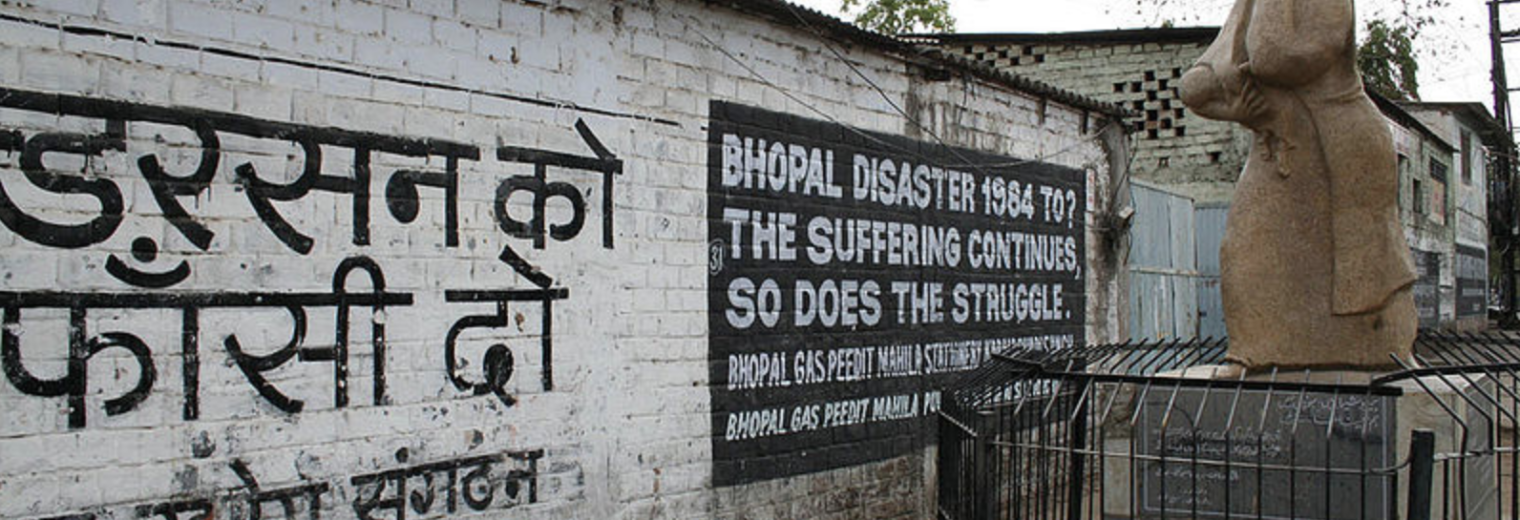Thirty years after the world’s most dangerous chemical plant disaster, we’re not much safer.
by Anna Lappé
On Nov. 7, Martin Sheen’s latest film, “A Prayer for Rain,” will be released in U.S. theaters. It brings to life the story of the tragic chemical disaster 30 years ago in Bhopal, India, and raises the question, Are we safe from a similar tragedy unfolding again? Chemical safety advocates say not very.
At 10 p.m. on Dec. 2, 1984, a gas leak started at Union Carbide’s pesticide plant in Bhopal, releasing more than 40 tons of methyl isocyanate and other chemicals. Within half an hour, nearby residents were coughing, experiencing burning eyes and having difficulty breathing. It would take another two and a half hours before sirens alerted the city of the disaster and six before the leak was brought under control. By that time, the damage had already been done: More than 10,000 people died in the immediate wake of the disaster, many from cardiac and respiratory arrest. Officials estimate hundreds of thousands of people have been affected over the decades, in the form of birth defects, increased infant mortality, learning disabilities and respiratory and vision problems.
The Bhopal plant — operated by Union Carbide and now owned by Dow Chemical — was similar in design to many chemical plants here in the United States. Bhopal was alarming to US chemical safety advocates and the American public. We realized we didn’t know what was in our own backyard.
Since then, federal regulations were supposed to protect Americans from a similar disaster unfolding here, but government interventions have been too few and far between. Thirty years on, public safety advocates say the U.S hasn’t done enough to improve the safety of chemical manufacturing. But a new regulation up for public comment might finally change all that.
A recent study found 473 chemical facilities that would each put more than 100,000 people at risk if there were a serious accident. Of those, 89 jeopardize the safety of 1 million people or more. One-third of Americans, the study found, live close enough to a chemical facility that they’re at risk of being affected by a toxic leak caused by accident, natural disaster or terrorist attack.
Today advocates say we’ve finally got regulation on the table that could dramatically improve how the industry is regulated. Based on an executive order to improve chemical facility safety and security that President Barack Obama signed last year, it calls for improving the monitoring of and reducing the risks posed by chemical manufacturing around the country.
And we the people finally have a voice. The Environmental Protection Agency’s public comment period, which closes on Oct. 29, gives everyday Americans a chance to weigh in. It’s an opportunity to let regulators know that we want real enforcement of safety regulations at our country’s most dangerous chemical plants.
Uneven History
In 1984, shaken by Bhopal, legislators began exploring regulations in the U.S. to prevent a similar accident here. Two years later, Congress passed the Emergency Planning and Community Right-to-Know Act, which established various monitoring and reporting systems to improve safety protocols, including the Toxic Releases Inventory (TRI), which requires companies to report if they produce more than 25,000 pounds of a listed chemical or handle more than 10,000 pounds of it. A few years later, in 1990, amendments to the Clean Air Act, known as “Bhopal” provisions, established the Risk Management Program to help prevent chemical accidents an authorized the Chemical Safety Board to investigate such accidents and recommend safety procedures.
But these interventions haven’t created the kind of protections that advocates say we need. The Chemical Safety Board, for instance, may only study accidents and produce recommendations; it can’t issue violations or fines. The TRI doesn’t have any real teeth either, and it covers only 549 chemicals, though more than 70,000 are on the market. As Rick Hind, the legislative director at Greenpeace told me, “With the Toxic Releases Inventory, we got the right to know, but we also wanted the right to ban.”
As for the Risk Management Program, companies are required to report on their production volumes just once every five years, on only 140 chemicals. Though the program requires companies to develop an “off-site consequence analysis” — a gauge of how many people would be affected by an accidental chemical release within a certain radius of a plant — it’s based only on that small subset of chemicals and on the single largest tank of each.
Finally, one of the most important elements of the Bhopal amendment, known as the general duty clause, states that facilities must be designed and operated in ways that prevent a catastrophic release of dangerous chemicals. It sounds like common sense, but the clause has been enforced sporadically.
The revisions to the Risk Management Program, up for public comment now, would at long last put real muscle behind the general duty clause, ensuring more regular inspections of facilities, protecting whistleblowers and modernizing worker protection programs. In addition, the EPA is considering requiring facilities to switch to safer chemicals or processes, as the Clorox Co. did voluntarily when it agreed to phase out the use of chlorine gas in its U.S. facilities from 2009 to 2012. According to Greenpeace, the company’s decision “eliminated catastrophic risks from chlorine gas to 13.6 million Americans living downwind of its facilities.”
The urgency for supporting these improvements to the Risk Management Program is even more apparent since the 9/11 attacks, when lawmakers realized that 12,700 chemical facilities in the country could be easy targets for terrorism. The following spring the EPA prepared to issue guidance for safer technologies and facilities, but the George W. Bush administration blocked the proposals, the chemical industry lobbied against them, and Congress stalled any further progress.
What Now?
It has taken more than a decade for renewed political leadership to take up the matter. Last year’s fertilizer explosion in West, Texas, which killed 17 and injured more than 100 others, issued a wakeup call. The accident revealed just how weak the protocols are for public safety. The anhydrous ammonium that caused the accident, for example, is not one of the 140 chemicals required for reporting under the Risk Management Program, though it is highly explosive.
The accident spurred Obama to issue his executive order, reviving the general duty clause. Advocates have been urging the public to speak up for chemical safety during the EPA’s comment period. More than 100 environmental justice, labor, public health, national security and environmental organizations that form the Coalition to Prevent Chemical Disasters are calling on the EPA to support the order to “prevent chemical plant disasters rather than ‘manage’ them.”
“This is now a once-in-a generation opportunity to finally activate the Bhopal amendment in the Clean Air Act,” said Hind. (His organization, Greenpeace, is a member of the coalition.) Let’s hope the EPA agrees.
By the time Sheen and Mischa Barton hit the big screen in “A Prayer for Rain,” the public comment period will be closed, and the EPA will be setting to work on drafting new policy. We’ll have to wait and see whether the call for serious action is heard louder than industry’s continued call for less regulation.
Originally published in Al Jazeera America
Photo by Simone.lippi at Italian Wikipedia




